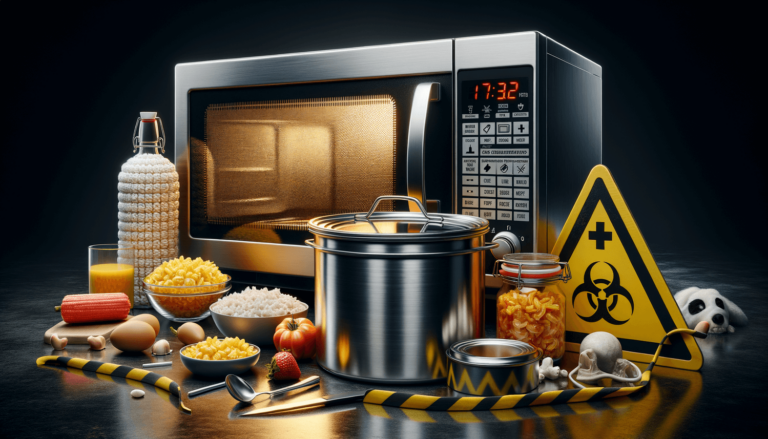

No, you should not microwave stainless steel. Microwaving stainless steel is unsafe because the metal can block the heat from warming the food and cause the microwave to work ineffectively. Moreover, putting stainless steel in the microwave can lead to sparks or fires due to the reflection of microwaves off the metal surface. Understanding the reasons behind this can help prevent potential accidents in the kitchen. At Setting King, we’re giving our trusted advice to ensure your safety and the longevity of your kitchen appliances.
Quick Summary
Stainless steel items in the microwave act as a shield, preventing the microwaves from heating the food. This blocking leads to uneven cooking or heating and can strain the microwave, potentially shortening its lifespan. More concerning are the sparks, known as arcing, that can occur when microwaves bounce off metal objects. Arcing can cause damage to the microwave’s interior or even turn into a fire if left unchecked. It’s these risks that make microwaving stainless steel a dangerous practice.
The principle behind a microwave oven is that it uses microwaves to excite water molecules in food, generating heat. However, stainless steel, being a metal, reflects these microwaves instead of allowing them to pass through. This reflection not only prevents the food from heating properly but also induces arcing. The nature of stainless steel to reflect microwaves is what poses the risk, making it unsuitable for use in a microwave.
Knowing that stainless steel is not microwave-safe, it’s crucial to find alternatives for heating or cooking your food in the microwave. Materials that are microwave-safe and don’t pose a fire hazard include:
Even when using microwave-safe materials, there are general precautions you should follow to ensure safety and efficiency:
At Setting King, we strive to provide essential kitchen safety tips and advice. Remember, microwaving stainless steel is dangerous and should be avoided to prevent damage to your microwave and potential fires. By following our advice and using safe alternatives like glass, ceramic, and specific plastics, you can ensure safe and efficient cooking in your microwave. Always be mindful of the containers you use and remember to check for the microwave-safe label to maintain a safe kitchen environment.